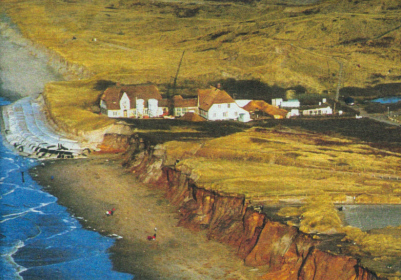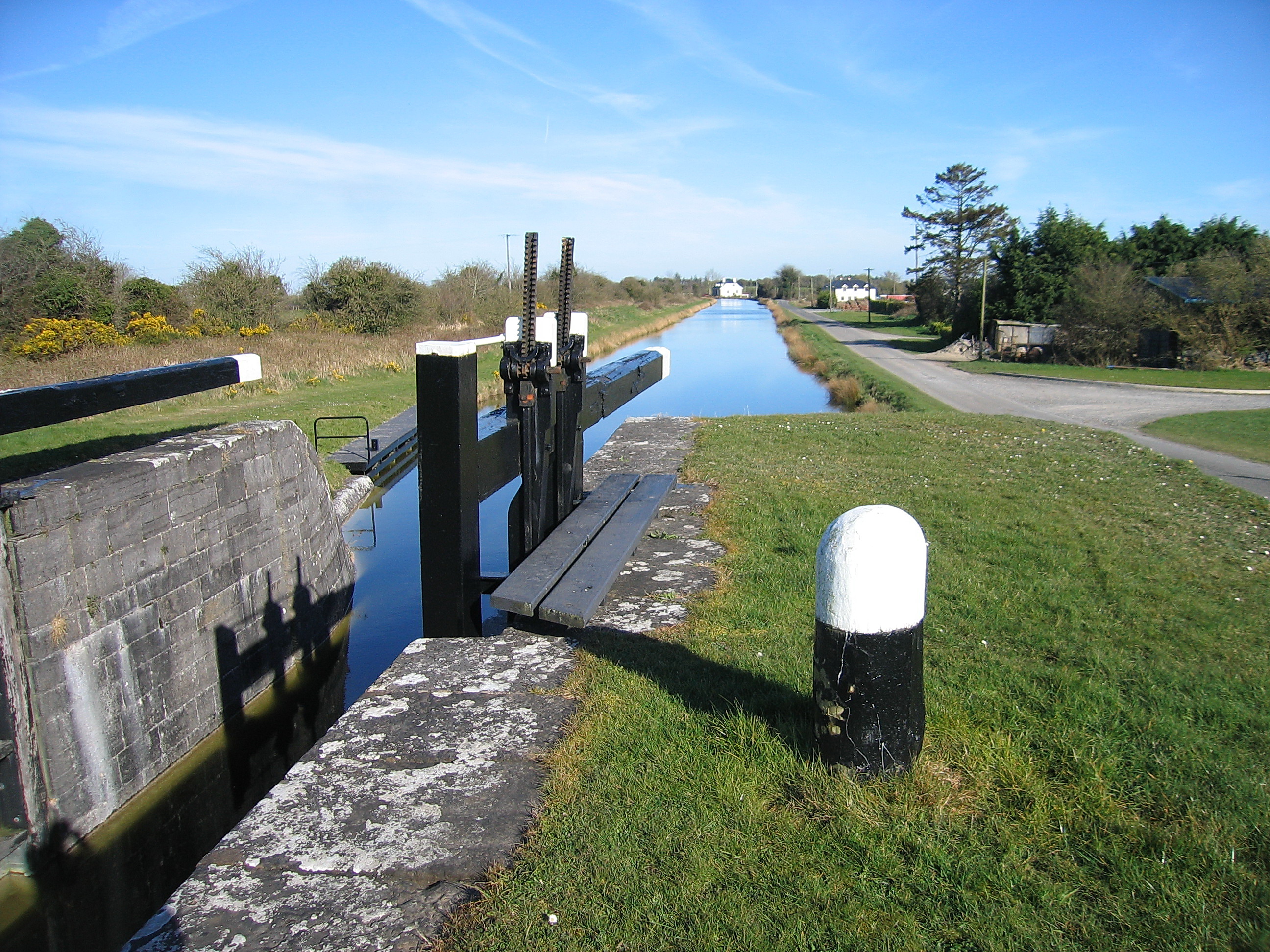|
Spoil Tips
A spoil tip (also called a boney pile, culm bank, gob pile, waste tip or bing) is a pile built of accumulated ''spoil'' – waste material removed during mining. These waste materials are typically composed of shale, as well as smaller quantities of Carboniferous sandstone and other residues. Spoil tips are not formed of slag, but in some areas, such as England and Wales, they are referred to as slag heaps. In Scotland the word ''bing'' is used. The term "spoil" is also used to refer to material removed when digging a foundation, tunnel, or other large excavation. Such material may be ordinary soil and rocks (after separation of coal from waste), or may be heavily contaminated with chemical waste, determining how it may be disposed of. Clean spoil may be used for land reclamation. Spoil is distinct from tailings, which is the processed material that remains after the valuable components have been extracted from ore. Etymology The phrase originates from the French ... [...More Info...] [...Related Items...] OR: [Wikipedia] [Google] [Baidu] |
Pas-de-Calais
Pas-de-Calais (, " strait of Calais"; pcd, Pas-Calés; also nl, Nauw van Kales) is a department in northern France named after the French designation of the Strait of Dover, which it borders. It has the most communes of all the departments of France, 890, and is the 8th most populous. It had a population of 1,465,278 in 2019.Populations légales 2019: 62 Pas-de-Calais INSEE The Calais Passage connects to the on the . Pas-de-Calais borders the departments of [...More Info...] [...Related Items...] OR: [Wikipedia] [Google] [Baidu] |
Geotextile
Geotextiles are permeable fabrics which, when used in association with soil, have the ability to separate, filter, reinforce, protect, or drain. Typically made from polypropylene or polyester, geotextile fabrics come in two basic forms: woven (resembling mail bag sacking) and nonwoven (resembling felt). Geotextile composites have been introduced and products such as geogrids and meshes have been developed. Geotextiles are durable and are able to soften a fall. Overall, these materials are referred to as geosynthetics and each configuration—geonets, geosynthetic clay liners, geogrids, geotextile tubes, and others—can yield benefits in geotechnical and environmental engineering design. History Geotextiles were originally intended to be a substitute for granular soil filters. The original, and still sometimes used, term for geotextiles is ''filter fabrics''. Work originally began in the 1950s with R.J. Barrett using geotextiles behind precast concrete seawalls, under precast c ... [...More Info...] [...Related Items...] OR: [Wikipedia] [Google] [Baidu] |
Vegetation
Vegetation is an assemblage of plant species and the ground cover they provide. It is a general term, without specific reference to particular taxa, life forms, structure, spatial extent, or any other specific botanical or geographic characteristics. It is broader than the term ''flora'' which refers to species composition. Perhaps the closest synonym is plant community, but ''vegetation'' can, and often does, refer to a wider range of spatial scales than that term does, including scales as large as the global. Primeval redwood forests, coastal mangrove stands, sphagnum bogs, desert soil crusts, roadside weed patches, wheat fields, cultivated gardens and lawns; all are encompassed by the term ''vegetation''. The vegetation type is defined by characteristic dominant species, or a common aspect of the assemblage, such as an elevation range or environmental commonality. The contemporary use of ''vegetation'' approximates that of ecologist Frederic Clements' term earth cover, a ... [...More Info...] [...Related Items...] OR: [Wikipedia] [Google] [Baidu] |
Ditch
A ditch is a small to moderate divot created to channel water. A ditch can be used for drainage, to drain water from low-lying areas, alongside roadways or fields, or to channel water from a more distant source for plant irrigation. Ditches are commonly seen around farmland, especially in areas that have required drainage, such as The Fens in eastern England and much of the Netherlands. Roadside ditches may provide a hazard to motorists and cyclists, whose vehicles may crash into them and get damaged, flipped over, or stuck and cause major injury, especially in poor weather conditions and rural areas. Etymology In Anglo-Saxon, the word ''dïc'' already existed and was pronounced "deek" in northern England and "deetch" in the south. The origins of the word lie in digging a trench and forming the upcast soil into a bank alongside it. This practice has meant that the name ''dïc'' was given to either the excavation or the bank, and evolved to both the words "dike"/"dyke" and ... [...More Info...] [...Related Items...] OR: [Wikipedia] [Google] [Baidu] |
Canal
Canals or artificial waterways are waterways or engineered channels built for drainage management (e.g. flood control and irrigation) or for conveyancing water transport vehicles (e.g. water taxi). They carry free, calm surface flow under atmospheric pressure, and can be thought of as artificial rivers. In most cases, a canal has a series of dams and locks that create reservoirs of low speed current flow. These reservoirs are referred to as ''slack water levels'', often just called ''levels''. A canal can be called a ''navigation canal'' when it parallels a natural river and shares part of the latter's discharges and drainage basin, and leverages its resources by building dams and locks to increase and lengthen its stretches of slack water levels while staying in its valley. A canal can cut across a drainage divide atop a ridge, generally requiring an external water source above the highest elevation. The best-known example of such a canal is the Panama Canal. Many ... [...More Info...] [...Related Items...] OR: [Wikipedia] [Google] [Baidu] |
Canals
Canals or artificial waterways are waterways or river engineering, engineered channel (geography), channels built for drainage management (e.g. flood control and irrigation) or for conveyancing water transport watercraft, vehicles (e.g. water taxi). They carry free, calm surface flow under atmospheric pressure, and can be thought of as artificial rivers. In most cases, a canal has a series of dams and lock (water transport), locks that create reservoirs of low speed current flow. These reservoirs are referred to as ''slack water levels'', often just called ''levels''. A canal can be called a ''navigation canal'' when it parallels a natural river and shares part of the latter's discharge (hydrology), discharges and drainage basin, and leverages its resources by building dams and locks to increase and lengthen its stretches of slack water levels while staying in its valley. A canal can cut across a drainage divide atop a ridge, generally requiring an external water source ... [...More Info...] [...Related Items...] OR: [Wikipedia] [Google] [Baidu] |
Ditches
A ditch is a small to moderate divot created to channel water. A ditch can be used for drainage, to drain water from low-lying areas, alongside roadways or fields, or to channel water from a more distant source for plant irrigation. Ditches are commonly seen around farmland, especially in areas that have required drainage, such as The Fens in eastern England and much of the Netherlands. Roadside ditches may provide a hazard to motorists and cyclists, whose vehicles may crash into them and get damaged, flipped over, or stuck and cause major injury, especially in poor weather conditions and rural areas. Etymology In Anglo-Saxon, the word ''dïc'' already existed and was pronounced "deek" in northern England and "deetch" in the south. The origins of the word lie in digging a trench and forming the upcast soil into a bank alongside it. This practice has meant that the name ''dïc'' was given to either the excavation or the bank, and evolved to both the words "dike"/"dyke" and ... [...More Info...] [...Related Items...] OR: [Wikipedia] [Google] [Baidu] |
Hydraulic Mining
Hydraulic mining is a form of mining that uses high-pressure jets of water to dislodge rock material or move sediment.Paul W. Thrush, ''A Dictionary of Mining, Mineral, and Related Terms'', US Bureau of Mines, 1968, p.560. In the placer mining of gold or tin, the resulting water-sediment slurry is directed through sluice boxes to remove the gold. It is also used in mining kaolin and coal. Hydraulic mining developed from ancient Roman techniques that used water to excavate soft underground deposits. Its modern form, using pressurized water jets produced by a nozzle called a "monitor", came about in the 1850s during the California Gold Rush in the United States. Though successful in extracting gold-rich minerals, the widespread use of the process resulted in extensive environmental damage, such as increased flooding and erosion, and sediment blocking waterways and covering farm fields. These problems led to its legal regulation. Hydraulic mining has been used in various forms aroun ... [...More Info...] [...Related Items...] OR: [Wikipedia] [Google] [Baidu] |
Placer Mining
Placer mining () is the mining of stream bed (Alluvium, alluvial) deposits for minerals. This may be done by open-pit mining, open-pit (also called open-cast mining) or by various surface excavating equipment or tunneling equipment. Placer mining is frequently used for precious metal deposits (particularly gold) and gemstones, both of which are often found in Alluvium, alluvial deposits—deposits of sand and gravel in modern or ancient stream beds, or occasionally glacial deposits. The metal or gemstones, having been moved by stream flow from an original source such as a vein, are typically only a minuscule portion of the total deposit. Since gems and heavy metals like gold are considerably denser than sand, they tend to accumulate at the base of placer deposits. Placer deposits can be as young as a few years old, such as the Canadian Queen Charlotte beach gold placer deposits, or billions of years old like the Elliot Lake uranium paleoplacer within the Huronian Supergroup i ... [...More Info...] [...Related Items...] OR: [Wikipedia] [Google] [Baidu] |





